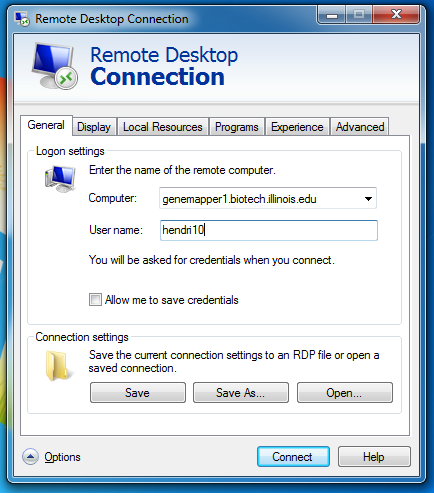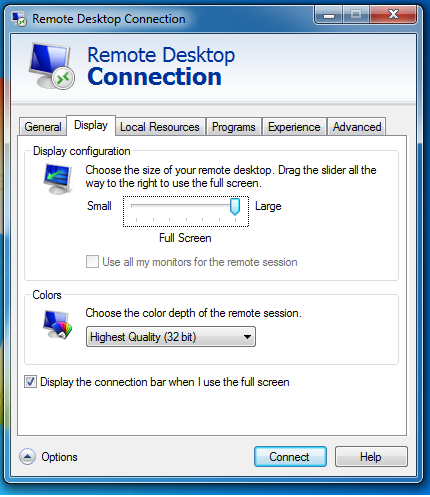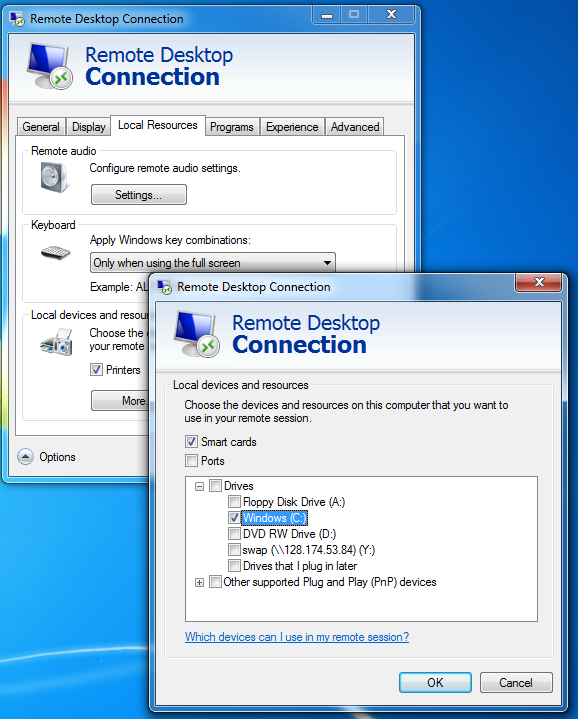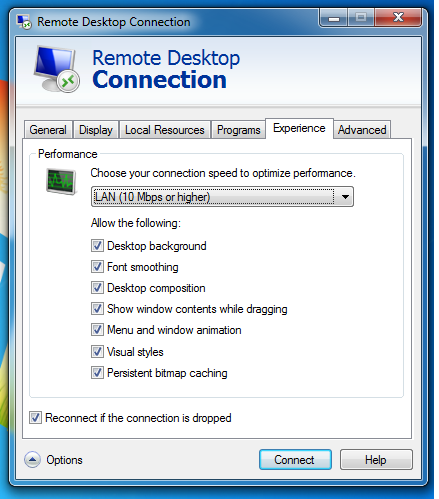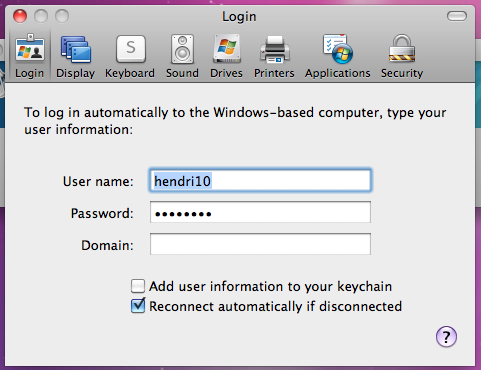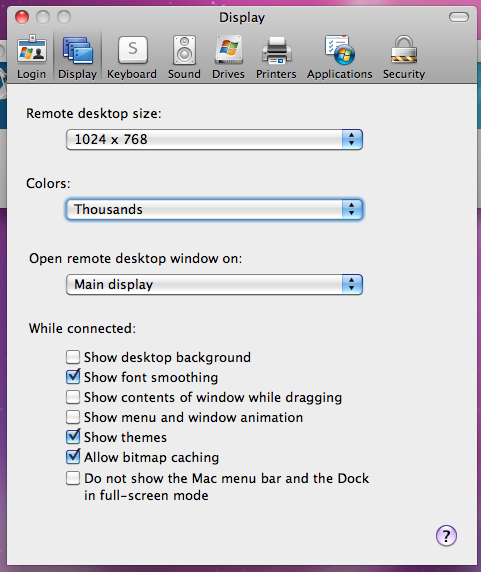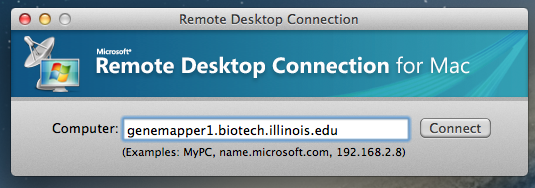Difference between revisions of "Genemapper"
(→Windows 7) |
(→OS X) |
||
| Line 79: | Line 79: | ||
**Launch the Genemapper 5 software. | **Launch the Genemapper 5 software. | ||
**For first-time-use Genemapper instructions, read "Running Genemapper" below. (Same username as for RDC, but there is a temporary first-time password, "biotech," and password change involved.) | **For first-time-use Genemapper instructions, read "Running Genemapper" below. (Same username as for RDC, but there is a temporary first-time password, "biotech," and password change involved.) | ||
| − | **When you are finished, exit out of the Genemapper software. Then log out of the Remote Genemapper. Please do not just close the remote window; you must click on the Start button, and "Log off" | + | **When you are finished, exit out of the Genemapper software. Then log out of the Remote Genemapper. Please do not just close the remote window; you must click on the Start button, and "Log off" or you will prevent others from accessing the computer. |
== Running Genemapper Software == | == Running Genemapper Software == | ||
Revision as of 07:07, 18 April 2014
Contents
About[edit]
GeneMapper® Software is a flexible genotyping software package that provides DNA sizing and quality allele calls for all Life Technologies® electrophoresis-based genotyping systems. Genemapper Website
The GeneMapper Remote Desktop is shared among all of the researchers who make use of our facility for fragment analysis applications. Before setting up your initial connection to the desktop, and each subsequent time you access it for data analysis, you must schedule a session on our Online Calendar at http://www-app.igb.illinois.edu/biotech_schedule/. Sessions are limited to 4 hours per customer per day.
Please follow the steps carefully and do not skip any of them. If you have questions or problems, please contact us at dna-seq@illinois.edu or 217-333-9520.
Access[edit]
- Please fill out the genemapper access form at http://www.biotech.illinois.edu/content/biotech-genemapper-access-form
- Once your account is activated you will be able to make reservations and login to Genemapper.
Reservations[edit]
After you receive confirmation that your Genemapper account has been set up, you may log on to our online calendar and reserve a time slot. To schedule a session, go to the online calendar at http://www-app.igb.illinois.edu/biotech_schedule/.
- After signing in, click on the "Schedule" tab, "Bookings."
- Double-click on the box that corresponds to the time and date that you want to use Genemapper. All times are CST. You can choose up to four hours a day.
- Choose only one server: either "Genemapper - Remote 1" or "Genemapper - Remote 2.." Do not sign up for both at the same time.
- When you double-click your choice of time, you can create a reservation. Choose your "Begin" time and your "End" time. Click "Create."
- Click the "Sign Out" link at the top right of the page.
Connecting[edit]
Genemapper Servers[edit]
- genemapper1.biotech.illinois.edu
- genemapper2.biotech.illinois.edu
Windows 8[edit]
- Launch the Remote Desktop Connection client by typing "Remote Desktop Connection" in Search. Click on "Remote Desktop Connection." The RDC dialog box will appear.
- Follow the same directions as listed below for Windows 7, as the Remote Desktop Connection program has not changed from Windows 7.
Windows 7[edit]
- Launch the Remote Desktop Connection client. Go to the Start button, then All Programs> Accessories> Remote Desktop Connection.
- In the "Computer" field, enter "genemapper1.biotech.illinois.edu" or "genemapper2.biotech.illinois.edu" DO NOT CONNECT YET!
- Click on the arrow next to "Options." It should expand to a window with several tabs.
- Now you will set up your connection preferences.
- On the "General" tab: Enter your username in the "User name" field. This will be your netid if you are part of the U of IL campus, or "cbc_[username]" if you are outside campus. You will be asked for credentials when you connect.
- On the "Display" tab: Choose "Large" for the full-size remote desktop screen. Choose "Highest Quality (32 bit)" for the colors. If your computer seems really slow, you may want to change this setting.
- On the "Local Resources" tab, Click "More" under the "Local devices and resources" section. Expand the "Drives" option and choose your "Windows (C:)" drive.
- Make a folder on your C:\ drive to be available for use on the Remote Desktop. We recommend that you create a unique folder for this purpose, so that other users on the Remote Desktop cannot access your personal files via the "My Computer" or "Home" folders. Use this folder to archive copies of your GeneMapper projects as you create them. We have unfortunately had instances in the past when the Remote became corrupted and all data was lost. Please do not use the Remote Desktop as an archive for your files!
- Click on the "Experience" tab and under "Performance," select your connection speed (i.e., dial-up, LAN, etc.) Choose LAN for use here on campus.
- Now you can click the "Connect" button. The GeneMapper server will open. Login using your username and IGB password. Your username is your netid if you are part of the University of Illinois. If you are outside campus, it is "cbc_[username]". Launch Genemapper 5.0, log in again with the same username, and the password you have set (to see first-time-use instructions, read "Running Genemapper Software." First-time use of Genemapper software is "biotech"; password must be changed). Proceed with your analysis, and please remember to keep an eye on the time.
- At the end of your session, first exit out of the GeneMapper software and then log off from the remote server. Please note that if you simply close the remote window you will not be logged off and others will be prevented from accessing the computer.
- In the remote window, go to Start> Log Off.
OS X[edit]
- If you don't have Remote Desktop Connection for Mac, you can download it here: http://www.microsoft.com/en-us/download/details.aspx?id=18140
- When it is installed, before connecting to the GeneMapper server, go to the top left of your screen to set up your connection preferences. Click on RDC > Preferences. It should open a window with several tabs.
- On the Login tab:
- Enter your username ‘XXXXXXX’ in the User name field. Your username is your netid if you are on campus, or "cbc_[username]" if you are outside campus.
- Enter your IGB password ‘XXXXXXX’ in the Password field.
- On the Display tab:
- Choose ‘1024 x 768’ for the size of the display to obtain the best performance.
- Choose 'Thousands' for the colors. 'Millions' will slow down the connection to the remote computer.
- On the "Drives" tab, select a folder on your computer to be available for use on the Remote Desktop.
- We recommend that you create a unique folder for this purpose, so that other users on the Remote Desktop cannot access your personal files via the "My Computer" or "Home" folders. Use this folder to archive copies of your GeneMapper projects as you create them. We have unfortunately had instances in the past when the Remote became corrupted and all data was lost. Please do not use the Remote Desktop as an archive for your files!
- Now type "genemapper1.biotech.illinois.edu" or "genemapper2.biotech.illinois.edu" in the Remote Desktop Connection for Mac window and click "Connect"
- If you get a dialog box warning you that the identity of the computer can't be verified, go ahead and click "Connect."
- Click "Ok" and then "Other User"
- Type in your username and password. Your username is your netid if you are on campus, or "cbc_[username]" if you are outside campus. Your password is your IGB password.
- Launch the Genemapper 5 software.
- For first-time-use Genemapper instructions, read "Running Genemapper" below. (Same username as for RDC, but there is a temporary first-time password, "biotech," and password change involved.)
- When you are finished, exit out of the Genemapper software. Then log out of the Remote Genemapper. Please do not just close the remote window; you must click on the Start button, and "Log off" or you will prevent others from accessing the computer.
Running Genemapper Software[edit]
- When you use RDC to connect to "genemapper1.biotech.illinois.edu" and "genemapper2.biotech.illinois.edu," you will put in your username (your netid if you are on campus and "cbc_[username]" if you are not on campus) and your IGB password.
- Double/click the shortcut on the desktop for the Genemapper software.
- If your name is not available using the drop down arrow beside "User Name," type your netid or "[cbc_username]"
- Type your temporary, one-time password, "biotech" You will get a message telling you to change your password, and the "Change password" dialog box will come up. Type in the password you wish to use; click OK.
- The Genemapper software will open.
- You should have already selected a folder on your computer to be available for use on the Remote Desktop, as described in the previous sections when setting up preferences for Remote Desktop Connection. We recommend that you create a unique folder for this purpose, so that other users on the Remote Desktop cannot access your personal files via the ‘My Computer’ or ‘Home’ folders. Use this folder to archive copies of your GeneMapper projects as you create them. We have unfortunately had instances in the past when the Remote became corrupted and all data was lost. Please do not use the Remote Desktop as an archive for your files!
- Proceed with your analysis, and please remember to keep an eye on the time.
- At the end of your session, first exit out of the GeneMapper software and then log off of the Genemapper computer. Please note that if you simply close the remote window you will not be logged off and others will be prevented from accessing the computer.
- In the remote window, go to START > Log Off.

